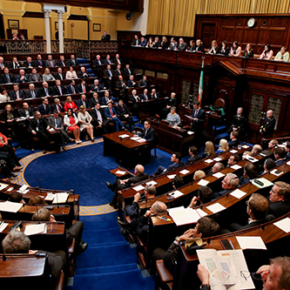Supply of taxis can’t keep up with population growth, research says
Dublin People 03 Oct 2024
New research conducted by Arup for the Taxis for Ireland Coalition has revealed that Small Public Service Vehicle (SPSV) driver and vehicle numbers are expected to drop considerably based on the average trend of the last ten years, despite a significant forecasted increase in the population.
The research also found that Ireland has performed poorly regarding taxi supply compared to the United Kingdom and New Zealand. The United Kingdom was chosen due to its close proximity to Ireland geographically and regulatory, while New Zealand was chosen due to its similar population size and available data.
The population of the United Kingdom increased by 5% (from 65.1 million to 68.2 million) while the number of licensed taxis and private hire vehicle drivers increased by 16% (from 356,531 to 393,689). In Ireland since 2014, the population increased by 15% while the number of SPSV drivers decreased by 10%.
The number of licensed taxis per 1,000 residents in Ireland decreased by 17% (from 4.5 to 3.7), while the number operating in the United Kingdom increased by 10% (from 4.3 to 4.8) and the number of taxis and ridesharing vehicles operating in New Zealand increased by 289% (from 0.96 to 3.7) in the same period.
Meanwhile, the Taxis for Ireland Coalition is set to recommend the establishment of a dedicated taxi strategy to address the issues facing the sector. This will be part of a series of recommendations presented to the Minister for Transport. The Coalition will appear before the National Transport Authority’s (NTA) Small Public Service Vehicle (SPSV) Advisory Committee today (Thursday) to discuss these recommendations aimed at improving taxi supply and enhancing the overall efficiency and reliability of taxi services.
Following a meeting with Minister Eamon Ryan in July, the Coalition proposes fifteen recommendations to the NTA and the Department of Transport to alleviate the current taxi shortage. Key recommendations include:
- A commitment by the Minister for Transport to develop a sector-specific strategy for the SPSV sector and its integration with existing transport policy frameworks.
- Examination of the provision of hackneys to expand rural Ireland’s transport offering.
- Assessment of taxi availability in urban areas from 12am-4am.
- Close collaboration between the NTA, National Disability Authority and the CSO to identify the level of WAV need in Ireland on a county basis at least every three years.
Speaking ahead of the presentation to the NTA, Pat Crotty, CEO of the Vintners Federation of Ireland and founding member of the Taxis for Ireland Coalition, said, “We are committed to working collaboratively with the NTA and other stakeholders to develop practical and effective solutions that will benefit both taxi operators and the public. The taxi shortage has been a constant theme throughout urban and rural Ireland alike, and our recommendations aim to alleviate the difficulties people face across the country.”
“Our goal is to ensure that the taxi industry remains a vital and competitive component of the public transportation system. The dwindling supply of taxis is not only affecting drivers but also causing significant inconvenience for passengers, leading to longer wait times, reduced availability, and potential safety concerns. We believe that these recommendations will help address the current supply issues and pave the way for a more sustainable and efficient service.”
The Taxis for Ireland Coalition also recommends that the NTA should review SPSV numbers on a county-by-county basis due to a reduction in taxi numbers in 23 out of 26 counties from 2019 to 2023. The Coalition believes that an analysis should be undertaken to determine why these reductions have occurred, and where necessary, actions should be taken to improve supply and address unmet demand.











